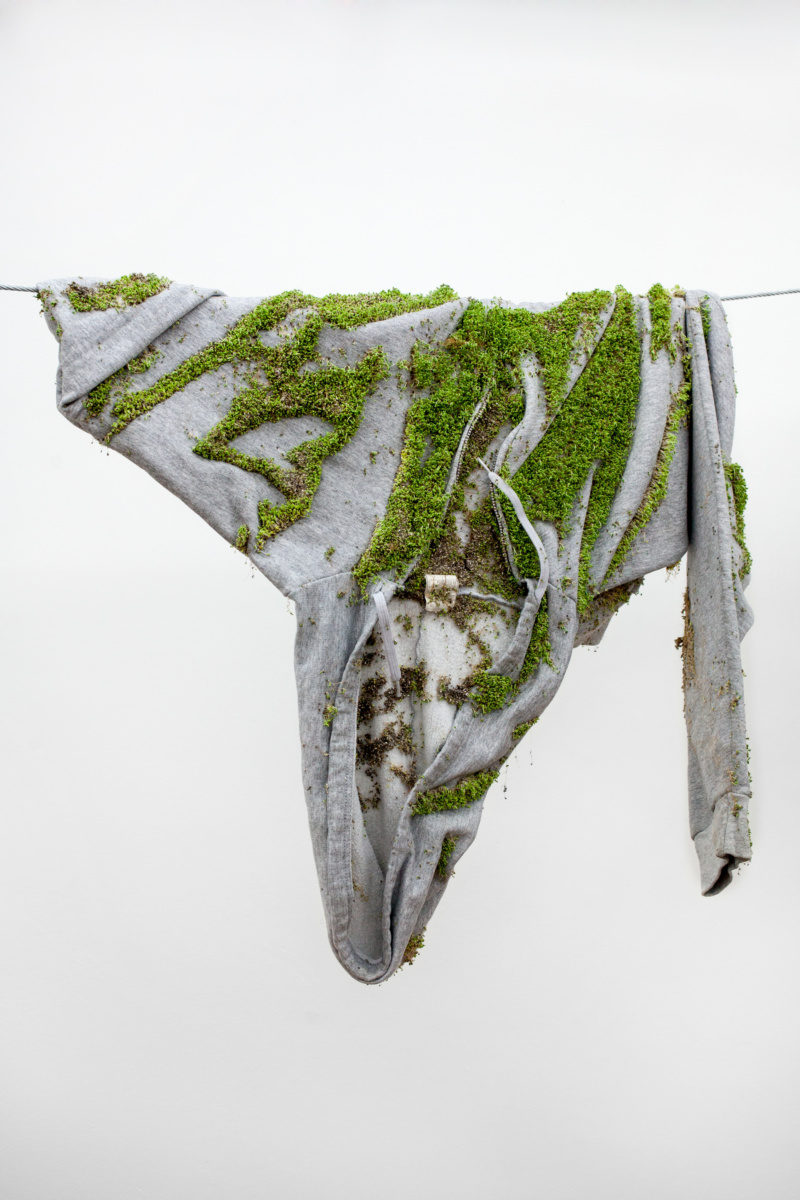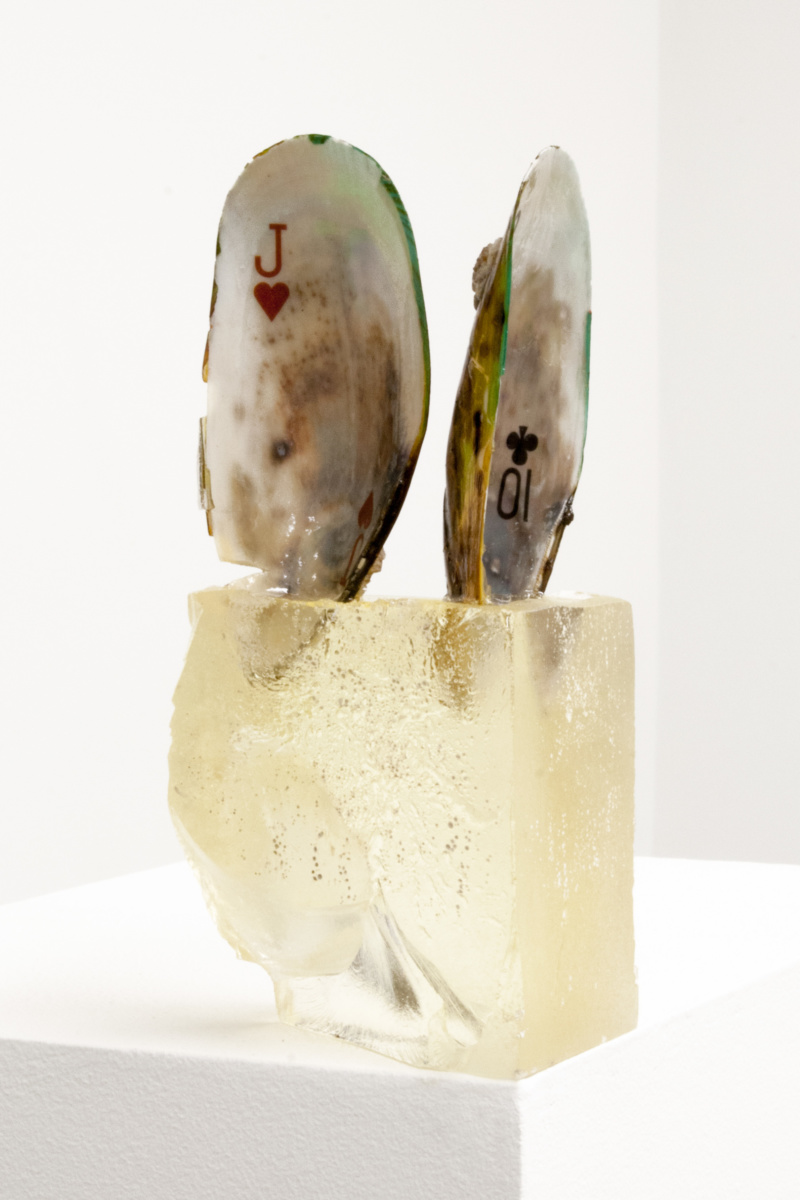
How do you prepare for an apocalypse that has already happened? We tend to think of the emotional effects of our eco-crisis in the future tense. Whether we are doomsday preppers, distressed activists, paralyzed consumers, or a frenzied mix of the above, we imagine ourselves looking out towards a dark horizon, a gathering storm. Is it possible that what we are afraid of is also a kind of memory? How do we keep track of our shared timelines, especially when the range of human experience under capitalism is so violently different? In the thick of this time-warp of globalized crisis, Bea Fremderman, the Moldova-born artist, makes her delicate, handy sculptures: “I think of them as relics of the future,” she offers, ruefully.

Sand dollars, shells, and old motherboards sit in parallel stacks in her Queens studio. Fremderman points out a series of weapons: a bludgeon made from wood and a brick-like Blackberry, nails emerging from a rubber band ball. A man’s shoe with a hole punched in the sole hangs on the wall. “That’s a birdhouse,” she says, a small gesture of solidarity between human and animal use. An extra-long branch leans against the corner; severed samples of different tree specimens from around New York are soldered together with precise rings of metal, like Frankenstein’s tree. A lot of her work isn’t here in the room with us because it decomposes in the gallery: her jeans and hoodies overtaken by living chia plants, for example, or her brick wall laid with soil and seeds. Radishes bloom, and the wall crumbles.
Fremderman’s approach to her materials seems archaeological, but without a hierarchy of value: a chunky zebra print flip phone from the early 2000s receives the same care as glimmering discs of mother of pearl. She’s making earrings and buttons for the fashion line Gauntlett Cheng, mollusks welded shut. Shells were used as the first money, she tells me, the beginning of natural objects transmogrified into symbolic entities of human value. These shells becoming new commodity items (fashion accessories, artworks) evoke a history of exchange, and complicate how we think of our stuff and the world’s stuff. A shell is kind of coin, a shard of plastic is a kind of stone, a landfill is a kind of mountain.

“At the core of my work is this issue of new nature— what things are left behind, what will outlive us, how we’ve changed the landscape,” she explains. Here, there is no difference between the natural and the man-made, but rather an awareness of what can decompose and what can’t. “We used to create things out of rock that would break down, and turn into sand, which comes together and becomes rock again,” she continues, “but now we have things that don’t break down.” And yet, this glitch, as it were, in the cycle of nature isn’t presented as the end of the line. Fremderman’s sculptures propose a new ouroboros, one where technology can fossilize into a third term, a new mode of survival. This scene of apocalypse whispers a utopian promise. “With my work, it’s not doomsday. It’s about starting over, dealing with what we have, and trying to make anew with what we know.”










 in your life?
in your life?

